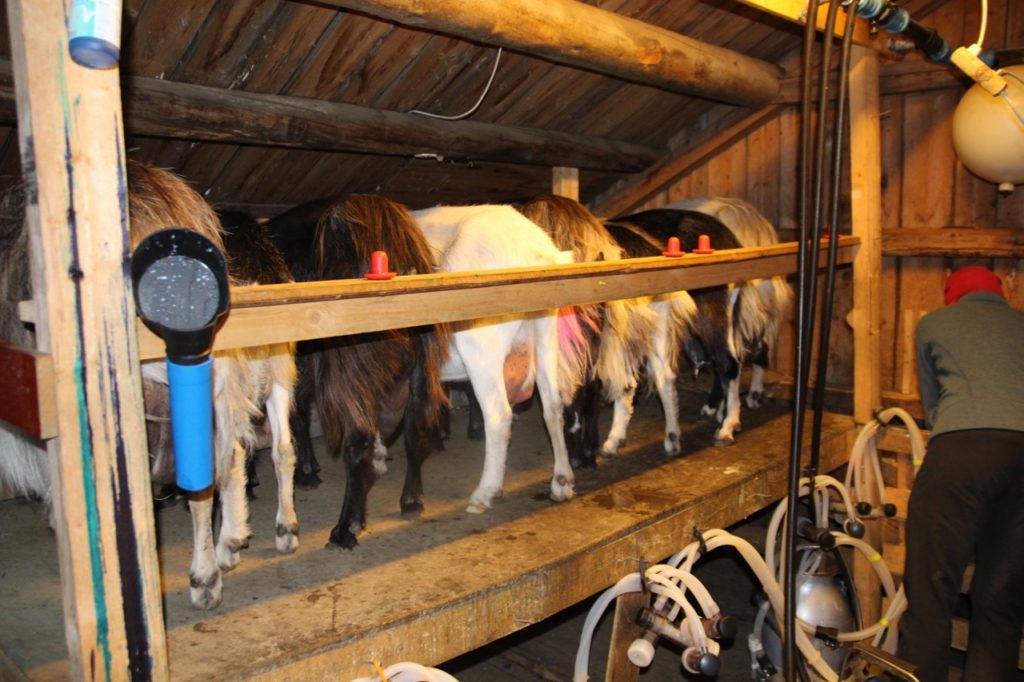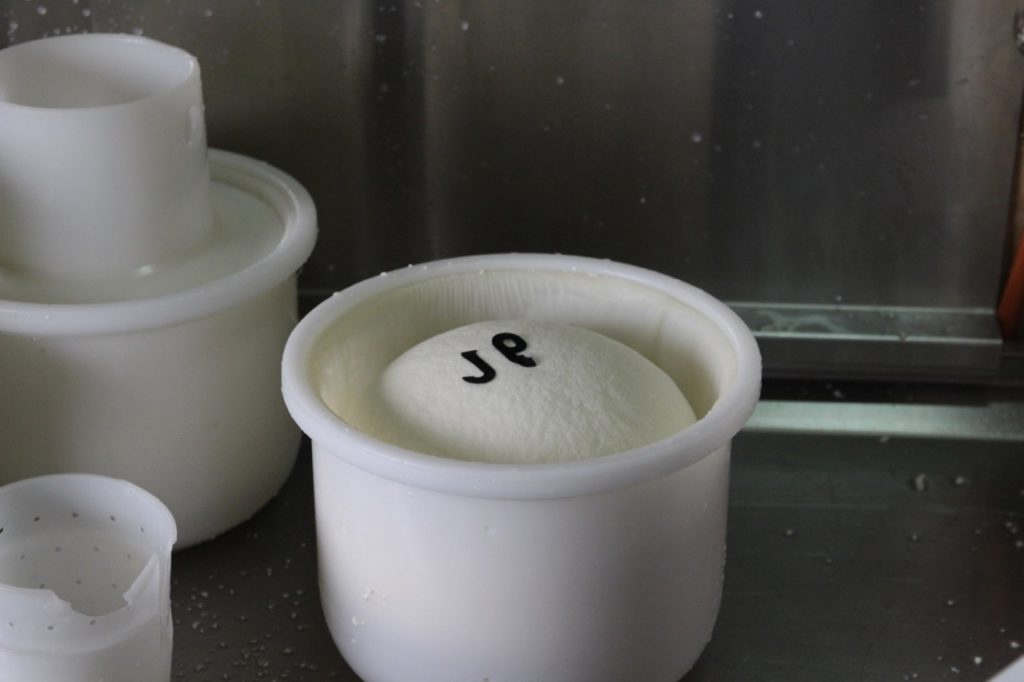The invitation was rather impersonal, it was a short Facebook post from Olestølen mikroysteri with a picture showing someone’s been there to make cheese and take pictures, and a general invite for anyone else to come if they so wanted.
Well, I jumped at it. Not that often I have the opportunity to make cheese. Last time was back in February this year, and before that in July last year, Cato Corner Fram, CT, the USA that was, actually. I do occasionally invite myself and from time to time get accepted. But I am a modest man, so not often I am brave enough to ask. That said, I have made cheese a few times, so I am starting to get at grips with it, but most cheese makers have their own routines, so some surprises do occur even though I more or less know what’s up next. All this said, the cheesemaker responded politely and wished me most welcome to the mountain farm/chalet where she and the herd of 35 goats resided during summer. Milking and cheesemaking starts early, so I accepted her offer to arrive the night before.

Olestølen mikroysteri – Valdres
Valdres, where the Olestølem mikroysteri is situated is a scenic valley in south Norway, forming the gateway to the wild Jotunheimen mountain range. It’s a three-and-a-half-hour-drive from Oslo, where I reside, and I realised it was quite a while since I had been in the area. Fagernes is the main town, and the sort of mountain farm is 50 minutes away. Direction Beitostølen. Quite a few foreign visitors in the area. You leave the main road just after the tiny village of Skammestein, and mind you, the road leading to Olestølen is a toll road. Do not forget to pay the 50 kroner. Eight kilometers. Road’s good, not to fear.
The night’s dark.. and then there’s the morning
Arrived just in time before it turned dark. The thing is, there is no electricity in the area, so when it’s getting dark, it’s getting really dark. Not much to do after arrival other than rolling out my sleeping bag and get tro sleep.

The magnificent art of cheese making
A quick breakfast, the curd was waiting. Just for the record, this is the absolutely smallest dairy I have ever visited. We were two people in there and it felt like a crowd. It’s on wheels by the way. For early and late season cheese making, it is used at the main farm down in the valley. The mountain farm season is from mid-June till mid-September.

I don’t know if you have thought about it, but to make cheese from cow’s and goat’s milk it takes ten liters of milk to make one kilo of cheese. Given one liter of milk is one kilo, ten kilos of milk gives one kilo of cheese. The other nine kilos? That’s whey. In Norway this whey is oftentimes used to make brown cheese. If not, you may feed the pigs with it, use it for baking bread or sell it to some factory manufacturing protein powder for the body builders. Or you can simply throw it away. That happens, as well. Our whey this day, was left for the pigs to enjoy. Usually though, they blend in some cream and make brown cheese.
Are you bored??
I am not going to bore you with all the cutting of the curd, but it took a while to transform it from “one piece of jelly” to the size of rice. Cut by hand of course. The last half hour of this process was mine. Cutting and stirring with a huge whisk to keep the curd separate and floating. Quite hard work, that is. Fun though. Next is getting rid of the whey. Poured it using a one liter measure. Takes a while. As it was led through pipes to a 30 liter container on the outside I had to count carefully. Sometimes difficult as the cheese maker was very clever telling me alle about cheesemaking. Counting and listening. Not a good combination for a man. Cheese making is great fun, but also hard work. Boring? Never.

Filling the molds
Then we just filled the curd into the molds, pressed and left it to drain a little more. Removed the cheese from the molds, turned it and put it back. Since just then there arrived a few people to buy cheese, it became my job to turn the cheeses. If you’re not all that experienced, it is actually a difficult task. The difficulty being getting it back into the mold right. Not tilted or anything like that.

This day we made a cheese called Kvit Ole; a semi firm cheese developing a natural rind. During some of the short pauses that occur during cheese making, I had turned a couple of trays with a chèvre style cheese called Mugnetind. And all the semi firm cheese maturing in a small maturing room. That also included flattening all the hairy mucor growing.

Finally
And when all this was done? Cleaning and more cleaning. And feeding the pigs. Soaked bread and whey. The geese also wanted some. Finally some lunch with cheese tasting.
Recommended
Olestølen is a fantastic place to visit. The mountain farm is open all summer until mid-August, though not every day. But if you just want to call by to buy some cheese, that is of course possible. They’re open for booking, small groups during week-ends, for activities like making brown cheese, horse riding and so on. Valdres is a fine area well worth visiting.
What do they make?
In addition to the Kvit Ole we made, a chèvre style cheese called Mugnetind. Brown cheese made outside over open fire. A fantastic goat milk butter. And yoghurt and sour milk. Very healthy. All high quality products made from organic goat’s milk. May be hard to find outside the local area, so the safest thing is to pay them a visit if you happen to be in that part of Norway.